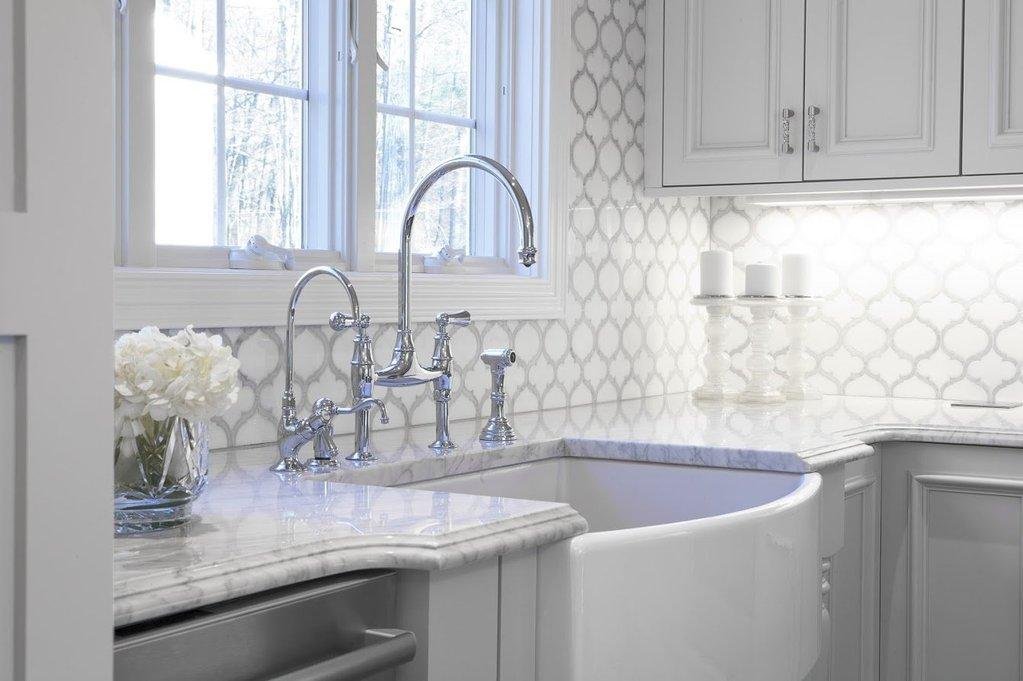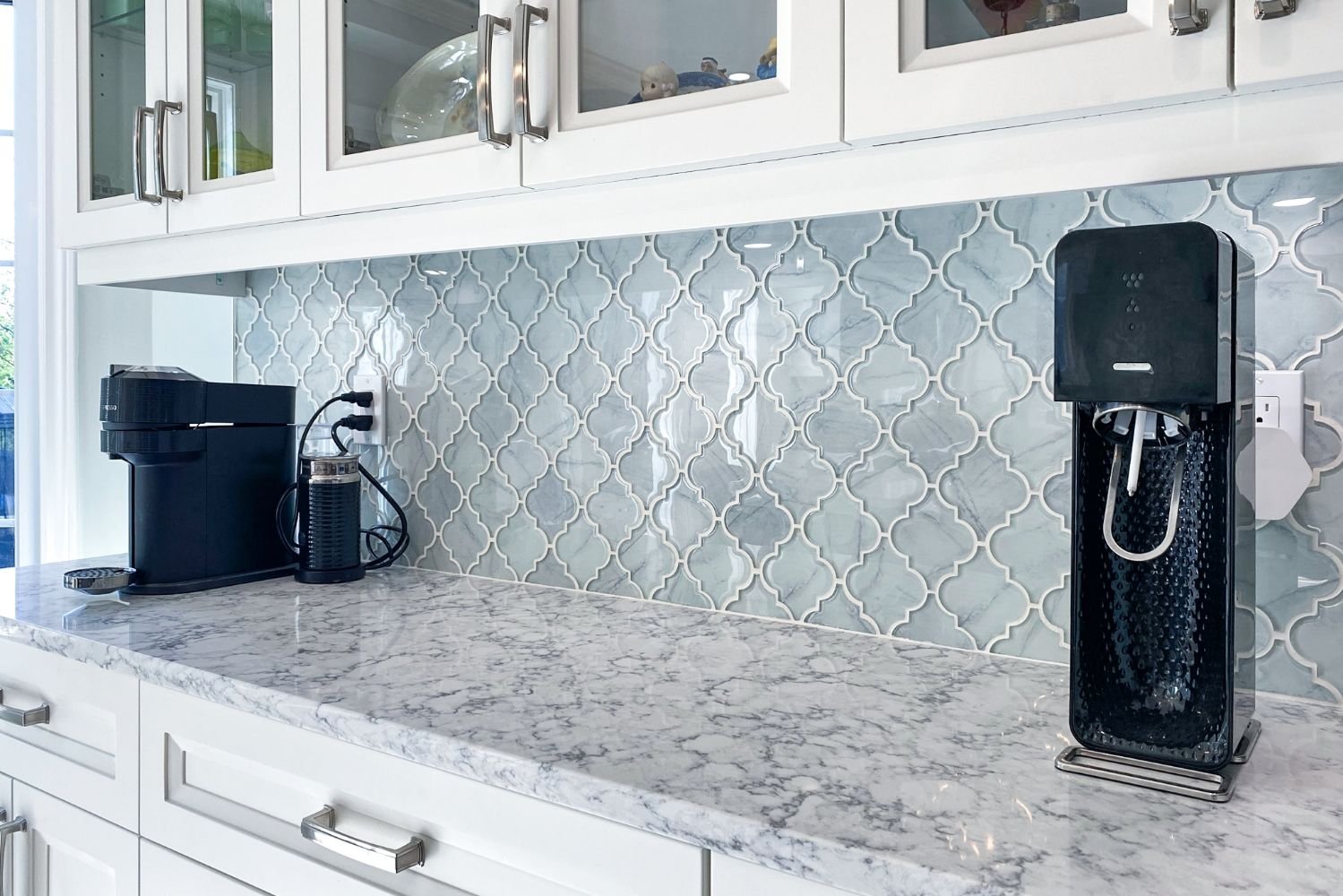A backsplash kitchen is a crucial element in contemporary kitchen design, serving both functional and aesthetic purposes. The backsplash is essentially a vertical surface installed behind kitchen countertops and sinks, designed to protect the walls from splashes, spills, and stains that can occur during cooking and food preparation. Its primary function is to safeguard the walls against moisture and potential damage, thereby enhancing the longevity of the kitchen space.
Beyond its protective role, a backsplash also contributes significantly to the kitchen’s overall aesthetics. It acts as a focal point, offering opportunities for creative expression through various design choices. The diversity of materials available for backsplashes includes tile, glass, metal, and stone, each providing unique characteristics that can influence the kitchen’s ambiance. For instance, ceramic and porcelain tiles are commonly used due to their durability and ease of cleaning, making them ideal for busy kitchens. Their variety of colors and patterns allow for personalization and creativity in design.
Glass backsplashes provide a modern touch, often reflecting light and creating an illusion of space. While they can be easier to clean, they may be more prone to damage and should be handled with care. Metal backsplashes, often made from stainless steel or copper, lend an industrial vibe to the kitchen and are durable; however, they may require regular maintenance to avoid tarnishing. Stone backsplashes, such as granite or marble, add a timeless elegance, yet their porous nature necessitates sealing to prevent staining.
In conclusion, a backsplash kitchen is not only about practicality but also about enhancing the visual appeal of the kitchen. The right choice of material and design can create a harmonious balance between functionality and style, elevating the overall kitchen environment.
Popular Backsplash Kitchen Styles and Trends
In recent years, the concept of backsplash kitchens has gained significant attention, serving as both a functional and aesthetic element in home design. Homeowners are increasingly gravitating towards specific styles that enhance their kitchen’s overall appeal. One of the most popular choices remains the classic subway tile, characterized by its rectangular shape and clean lines. Typically arranged in a staggered pattern, subway tiles offer a timeless look that fits seamlessly into various kitchen aesthetics, from contemporary to traditional.
Mosaic patterns have also gained traction, allowing homeowners to create distinctive visual interest through intricate designs. These versatile tiles come in a myriad of colors, shapes, and sizes, making them ideal for those looking to add a unique touch to their backsplash kitchen. Whether installed as an accent or covering the entire wall, mosaic tiles provide endless possibilities for customization, enhancing the kitchen’s focal points.
Natural stone backsplashes, such as granite and marble, continue to be favored for their luxurious appearance and durability. These materials bring a sense of elegance to any kitchen, complementing a range of styles from rustic to modern. The organic textures and colors of stone create a warm and inviting atmosphere, making them a popular choice for those seeking a sophisticated look.
Bold colors and graphic designs are also trending, appealing to those who embrace the eclectic style. Vibrant hues and artistic patterns can inject personality into a backsplash kitchen, allowing homeowners to express their individuality. It is crucial, however, to ensure that these bold choices harmonize with existing decor elements to create a cohesive design.
When selecting a backsplash style, consider the overall theme of the kitchen. A well-chosen backsplash not only enhances the aesthetic appeal but also elevates the functionality of the space, making it a vital aspect of kitchen design. Trendy, stylish, and practical, the right backsplash can truly transform the appearance of your kitchen.
DIY vs. Professional Installation: What You Need to Know
When considering a backsplash kitchen installation, one of the primary decisions is whether to undertake the project as a DIY endeavor or to hire a professional. Each approach has its own advantages and disadvantages, which can significantly influence the final outcome and the overall experience of creating a stunning kitchen space.
Opting for a DIY installation can be appealing, especially for those who enjoy hands-on projects and want to save on labor costs. A successful DIY backsplash project requires basic tools such as a tile cutter, adhesive trowel, and level, along with a keen attention to detail. Homeowners can also benefit from the extensive array of available materials, from ceramic and glass tiles to innovative peel-and-stick options. However, it is crucial to assess one’s skill level; inadequate skills can lead to mistakes that might require costly repairs, undermining the initial cost-saving intention.

On the other hand, hiring a professional can ensure a high-quality installation that adheres to industry standards. Professionals bring valuable expertise, which can be particularly beneficial for complex designs or unusual layouts that may pose challenges for a novice installer. While the initial expense may be higher than a DIY project, the long-term benefits, including durability and aesthetics, often justify the investment. Additionally, professional installers typically have access to better materials and techniques, enhancing the overall quality of the backsplash kitchen.
When making this decision, several factors should be considered, such as your budget, available time, and personal skill level. Assess whether you are willing to invest time and effort for potential savings or if the peace of mind that comes with professional assistance is more appealing. An informed decision will lead to a satisfactory kitchen transformation that enhances space functionality and beauty.
Maintenance Tips for Your Backsplash Kitchen
Maintaining the elegance of your backsplash kitchen is essential to ensure its longevity and visual appeal. Different materials used in backsplashes, such as tile, glass, and stone, require specific care and cleaning methods to keep them looking fresh. For instance, ceramic or porcelain tiles are generally more durable and can be cleaned with a mixture of mild detergent and warm water. A soft cloth or sponge is advisable for this purpose, as abrasive materials can scratch the surface.
Glass backsplashes, while stylish, can show fingerprints and smudges more easily. To maintain their clarity, it is recommended to use a glass cleaner that is free from ammonia, as it can cause streaking. Regular wiping with a microfiber cloth can also prevent buildup and maintain shine. On the other hand, natural stone materials, such as granite or marble, need specialized products that are pH-balanced to avoid damaging the finish. It is vital to regularly seal these surfaces to protect them from staining and etching.
Grout is another critical component of a backsplash kitchen that requires attention. To maintain grout lines, a gentle scrub with a mixture of baking soda and water can effectively lift stains without causing damage. Additionally, applying a grout sealer periodically will help prevent deeper stains and mildew buildup.
For tougher stains, consider using a non-abrasive cleaner or a paste made of baking soda and water. Always test a small area first to ensure compatibility with the surface material. Preventing damage involves avoiding harsh cleaning tools and products, and keeping the area dry to avoid moisture-related issues. By following these maintenance tips, you can keep your backsplash kitchen looking beautiful and functioning optimally for years to come.

